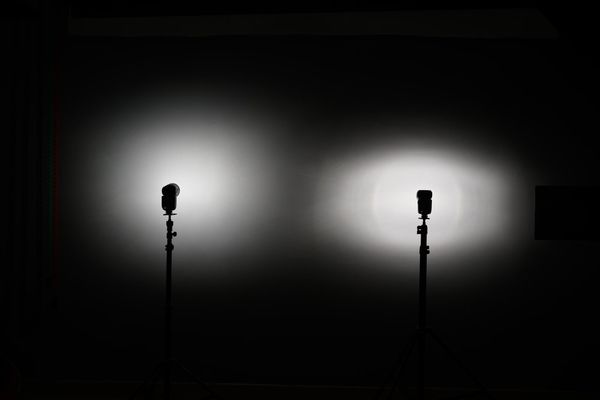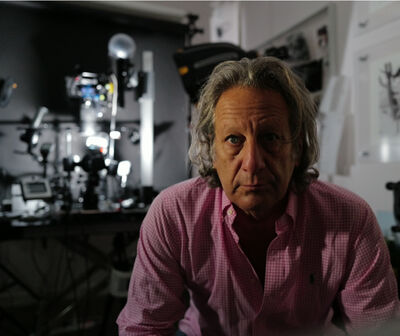GODOX round head vs standard portrait light
Oct 29, 2020 14:57:19 #
CWW
Loc: North Jersey
Greetings all, I'm researching portrait lighting on Amazon (Godox). Can anyone explain the advantage/dis-advantage of a round flash head vs a rectangle head? Does it all come down to Kelvin ratings? Thanks in advance.
Oct 29, 2020 14:58:41 #
Oct 29, 2020 16:27:22 #
The rectangular head shape is intended to illuminate the area seen by a typical 3 X 2 aspect ratio sensor or film.
Oct 29, 2020 16:57:22 #
I've used the V1 and love it.
It was a back-up to my Nikon SB-5000 for a wedding last year.
I was so impressed testing it, I wound up using the V-1 for most of it.
I'll buy another one as soon as I can afford it.
I knew the V1 had a much longer battery life but it gave me more consistent good exposure than the SB-5000, which surprised me, being a Nikon Fan-Boy all these years.
The head also tilts back without having to rotate, which makes it great for bouncing the light.
And..it has a radio receiver to use remotely.
(The Nikon does too, but it's not as easy to use)
With the dome head diffuser, it works great in a softbox or umbrella, filling them more evenly.
And....the V1 is about half the price of Nikon's current top of the line flash.
Re: round highlights...
The round head isn't that much bigger than a standard rectangular head so the difference of the reflection in the eyes may not even be seen.
For portraits, I'd use a modifier like a softbox anyway to smooth the shadows cast by the flash. Size matters! You need a bigger source to soften the light, not just have it be round. Used w/o a modifier, it goes give a smoother transition than say a TT860 or probably a lot of other rectangular flashes. See photo below. V1 on left, 860 on the right as 28mm setting.
Good video review HERE.
I would buy mine from a local store if you still have one or B&H, Adorama (Flashpoint brand), or some other reputable brick and mortar store.
It was a back-up to my Nikon SB-5000 for a wedding last year.
I was so impressed testing it, I wound up using the V-1 for most of it.
I'll buy another one as soon as I can afford it.
I knew the V1 had a much longer battery life but it gave me more consistent good exposure than the SB-5000, which surprised me, being a Nikon Fan-Boy all these years.
The head also tilts back without having to rotate, which makes it great for bouncing the light.
And..it has a radio receiver to use remotely.
(The Nikon does too, but it's not as easy to use)
With the dome head diffuser, it works great in a softbox or umbrella, filling them more evenly.
And....the V1 is about half the price of Nikon's current top of the line flash.
Re: round highlights...
The round head isn't that much bigger than a standard rectangular head so the difference of the reflection in the eyes may not even be seen.
For portraits, I'd use a modifier like a softbox anyway to smooth the shadows cast by the flash. Size matters! You need a bigger source to soften the light, not just have it be round. Used w/o a modifier, it goes give a smoother transition than say a TT860 or probably a lot of other rectangular flashes. See photo below. V1 on left, 860 on the right as 28mm setting.
Good video review HERE.
I would buy mine from a local store if you still have one or B&H, Adorama (Flashpoint brand), or some other reputable brick and mortar store.
Oct 29, 2020 19:56:04 #
We have our own Portrait section here on the hog:
https://www.uglyhedgehog.com/s-127-1.html
Another good place to start with leaning about lighting is Strobist Lighting 101.
Then you can move into 102 and 103
Neil Van Niekerk has a great site here: https://neilvn.com/tangents/flash-photography-techniques/
Joe McNally is another https://blog.joemcnally.com
FaceBook has several groups, one of which is titled “Portraits and off-camera flash”
https://www.uglyhedgehog.com/s-127-1.html
Another good place to start with leaning about lighting is Strobist Lighting 101.
Then you can move into 102 and 103
Neil Van Niekerk has a great site here: https://neilvn.com/tangents/flash-photography-techniques/
Joe McNally is another https://blog.joemcnally.com
FaceBook has several groups, one of which is titled “Portraits and off-camera flash”
Oct 29, 2020 20:57:42 #
If you are in the market for a new Speedlight and are serious about learning and mastering flash technique, I would definitely recommend the ROUND head. I.d go a step furter and select one with a user-changeable flash tube, bar bulb operation when required, and interchangeable reflectors. There are several reasons.
PARABOLIC THEORY: A round reflector is a parabolic type which when combined with the appropriate flash tube and head design will produce more even and a wider beam of ligh than the usual rectangular configuration of most speedlights. The unmodified parabolic reflector is better for feathering and partial bouc where you are using the edge of the beam.
FLASH TUBES: The plugin type of tube which usually accompanies units with interchangeable reflectors emits more light from the sides of the helical shaped (coiled) envelope than from the front ort top of the tube and will produce more lumens-per watt-second than because that light direction will strike the inside of the parabolic reflector and move forward with more effective power. When used without the reflector in the bare-bulb mode it will provide omnidirectionally which can be useful and it will be more effective when used in a softbox. If it is accidentally damaged, it can be easily replaced.
INTERCHANGABILITY: There are reflectors available that can be used directly with wide-angle lenses and provide better coverage or use with normal or longer focal length for more even lighting. With a small tube position extender and a special mirror-like telephoto reflector, you can fill light a subject taken with a very long lens- up to 600mm. I have a specially designed high-output reflector that will add 1-2 more stops to an umbrella rig.
If you want to fill in natural or existing very low ligh with just a wink of flash. bare-bulb will knock 2 stops off of your lowest power setting.
You can still bounce and .or use a wide variety of modifiers that are compatible with round heads.
These heads are available on units made by Lumadyne, Quantum, Norman and thereis a really nice one at a lower price marketed under the brand Flashpoint. There are also a few one-piece hot-shoe mountable Speedlight with the kind of head designs.
This is not to say that the traditional rectangular Speedlights are bad. For their size and price, many of them are remarkable good but the small linear flash tube in a small enclosure with a highly polished reflector will not do the same things and provide the same flexibility as the round ones.
PARABOLIC THEORY: A round reflector is a parabolic type which when combined with the appropriate flash tube and head design will produce more even and a wider beam of ligh than the usual rectangular configuration of most speedlights. The unmodified parabolic reflector is better for feathering and partial bouc where you are using the edge of the beam.
FLASH TUBES: The plugin type of tube which usually accompanies units with interchangeable reflectors emits more light from the sides of the helical shaped (coiled) envelope than from the front ort top of the tube and will produce more lumens-per watt-second than because that light direction will strike the inside of the parabolic reflector and move forward with more effective power. When used without the reflector in the bare-bulb mode it will provide omnidirectionally which can be useful and it will be more effective when used in a softbox. If it is accidentally damaged, it can be easily replaced.
INTERCHANGABILITY: There are reflectors available that can be used directly with wide-angle lenses and provide better coverage or use with normal or longer focal length for more even lighting. With a small tube position extender and a special mirror-like telephoto reflector, you can fill light a subject taken with a very long lens- up to 600mm. I have a specially designed high-output reflector that will add 1-2 more stops to an umbrella rig.
If you want to fill in natural or existing very low ligh with just a wink of flash. bare-bulb will knock 2 stops off of your lowest power setting.
You can still bounce and .or use a wide variety of modifiers that are compatible with round heads.
These heads are available on units made by Lumadyne, Quantum, Norman and thereis a really nice one at a lower price marketed under the brand Flashpoint. There are also a few one-piece hot-shoe mountable Speedlight with the kind of head designs.
This is not to say that the traditional rectangular Speedlights are bad. For their size and price, many of them are remarkable good but the small linear flash tube in a small enclosure with a highly polished reflector will not do the same things and provide the same flexibility as the round ones.
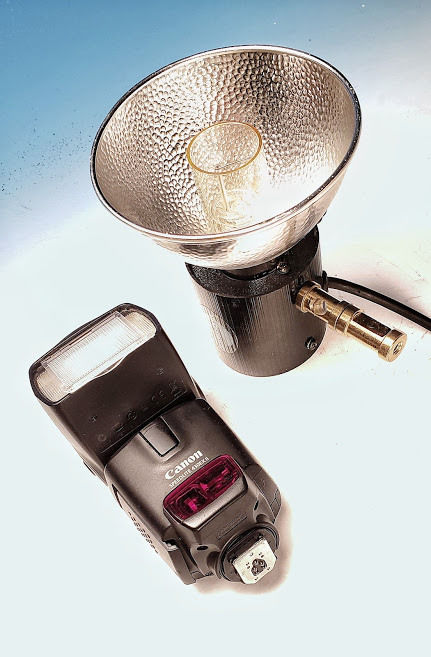
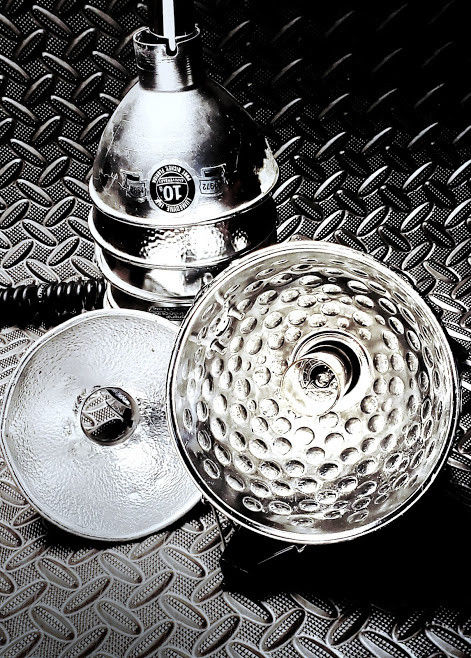
Oct 30, 2020 08:51:32 #
tcthome
Loc: NJ
E.L.. Shapiro wrote:
If you are in the market for a new Speedlight and ... (show quote)
Godox has the AD200 which can be used with different accessories. This might be the way to go if your budget is limited.
Oct 30, 2020 09:19:55 #
Can’t believe how timely this post is. I just bought a pair of Godox AD200Pro lights with the Magmod systems. Now I have to learn how to use them. Seems like I should be able to with a little help from my friends!
Oct 30, 2020 09:55:37 #
tcthome wrote:
Godox has the AD200 which can be used with different accessories. This might be the way to go if your budget is limited.
I've been trying to get more information on the AD200 si I can advise. I know it has a round reflector but I can't tell from the pictures if it has a plug-in flash tube or a fixed circular to the helical tube. I know there are modifiers and accessories that fit on to the unit but I haven't seen them in the illustrations as yet.
The reflectors I use on my Lumadyne heads are not all Lumadyne original equipment. Some are originally made for Ascor, Norman Q-Flash heads but they al,l more or less, fit with a slight alteration. This can be done with the Flashpoint model I am suggesting. That unit is moderately priced and operates with a shoulder-carried power pack- it's very powerful.
I use my units, mainly for on and off- camera hand-held shooting of events. For portraiture, I recommend Monolight with modelling lamps.
Oct 30, 2020 10:07:54 #
E.L.. Shapiro wrote:
I've been trying to get more information on the AD200 si I can advise. I know it has a round reflector but I can't tell from the pictures if it has a plug-in flash tube or a fixed circular to the helical tube. I know there are modifiers and accessories that fit on to the unit but I haven't seen them in the illustrations as yet.
(Adorama's Flashpoint Evolve 200 and the Godox AD 200 are the same unit)
It's a little bigger than a large speedlght
Has TTL, manual, High Speed Sync, multi pop.
Rated at 500 full-power flashes per charge (more if lower power) and is supposedly a stop and a half brighter than most high-end speedlights.
The flash head on the AD-200 is swappable.
Included in the kit is a fresnel head with a fixed 35mm FF coverage (and LED focusing light) and a plug-in bare-tube head.
There is an optional round head like the V1.
I think there's an option for a continuous LED light as well.
You can buy a remote power cord to use as a shoulder power pack.
The bare-tube head can take the reflector from the Quantum or you can use a Bowens S adapter to mount other accessories- reflectors, softboxes...etc.
I also have an AD 600.
It has a modeling lamp.
Haven’t used my AC-powered monolights in years; most of what I shoot is on location.
As with most Godox units, they have a built-in radio receiver and can be adjusted from the transmitter.
Nikon SB5000 AD 200 with fresnel head
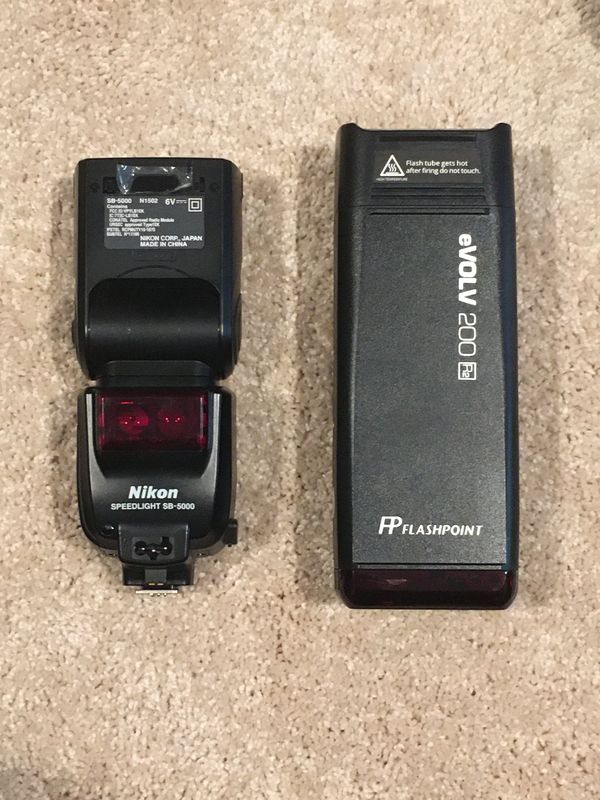
(Download)
Quantum reflector with bare tube head
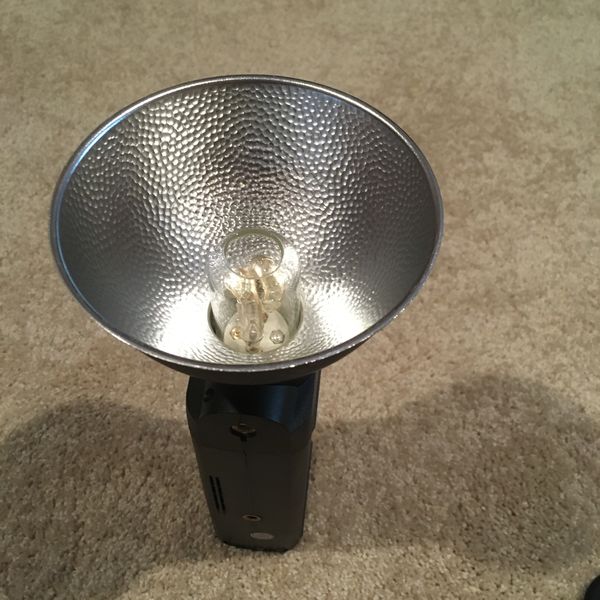
(Download)
optional remote cord
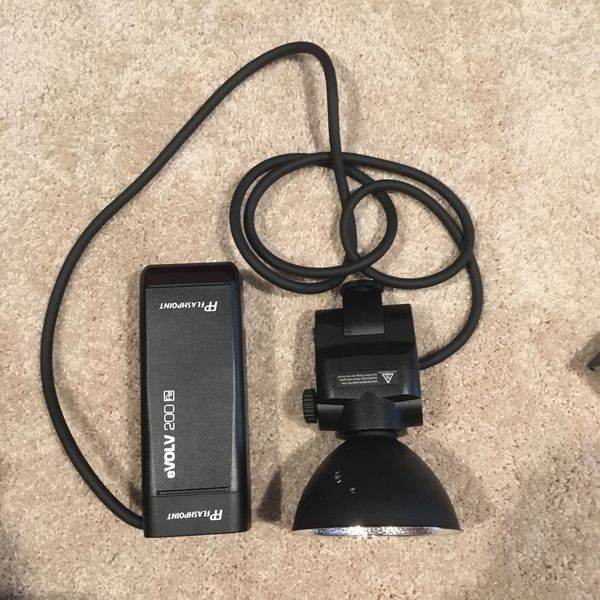
(Download)
This is using the AD 600 and medium softbox
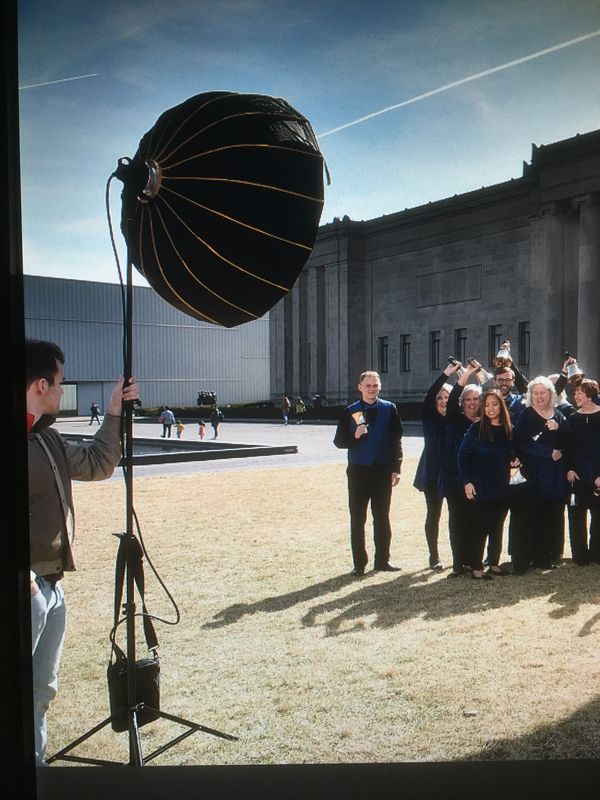
(Download)
Oct 30, 2020 11:16:08 #
The new AD200 pro version is touted to have more consistent color balance throughout the power range.
Also, the power is now adjustable in 1/10th stops i, but you have to use the new XT2 transmitter. The older models work, but only at 1/3 of a stop.
Also, the power is now adjustable in 1/10th stops i, but you have to use the new XT2 transmitter. The older models work, but only at 1/3 of a stop.
Oct 30, 2020 11:16:20 #
GoofyNewfie wrote:
i (Adorama's Flashpoint Evolve 200 and the Godox ... (show quote)
Thanks for the information! NICE! Looks like a good value for the price. Do you know if there is a model that jibes with the Canon TTL system?
Oct 30, 2020 11:22:36 #
E.L.. Shapiro wrote:
Thanks for the information! NICE! Looks like a good value for the price. Do you know if there is a model that jibes with the Canon TTL system?
Yes, you just need the proper transmitter.
The 200, 400 and 600 can read signals from other camera brands.
(my best friend shoots Canon and borrows my 200 occasionally.).
There is also an adapter then lets you mount two AD 200's together for more power and it uses a bare tubes.
https://www.bhphotovideo.com/c/product/1353389-REG/godox_ad_b2_ad200_dual_power_flash.html/?ap=y&ap=y&smp=y&smp=y&lsft=BI%3A514&gclid=CjwKCAjw8-78BRA0EiwAFUw8LPrJcHY9chFBEmeuxgtMw92qBBUFSmuiMymResq3jjlLlMambWqvmhoCRfUQAvD_BwE
Oct 30, 2020 11:22:52 #
Oct 30, 2020 11:23:57 #
CWW
Loc: North Jersey
PHRubin wrote:
The rectangular head shape is intended to illuminate the area seen by a typical 3 X 2 aspect ratio sensor or film.
Thanks!
If you want to reply, then register here. Registration is free and your account is created instantly, so you can post right away.



